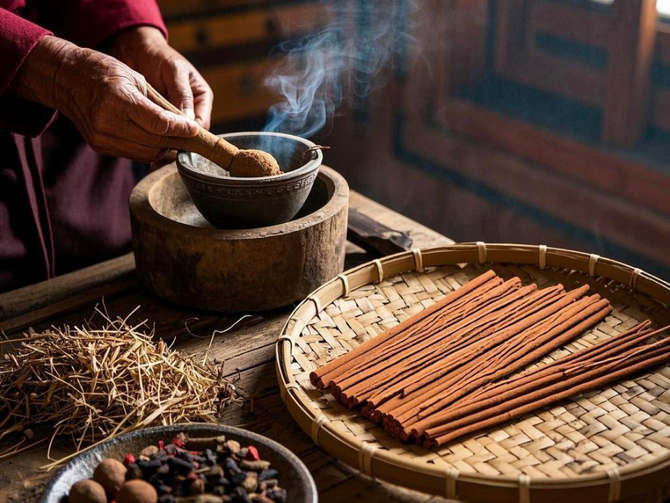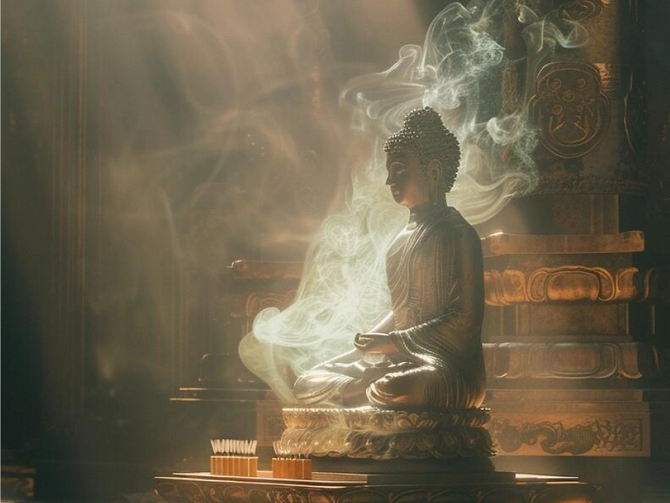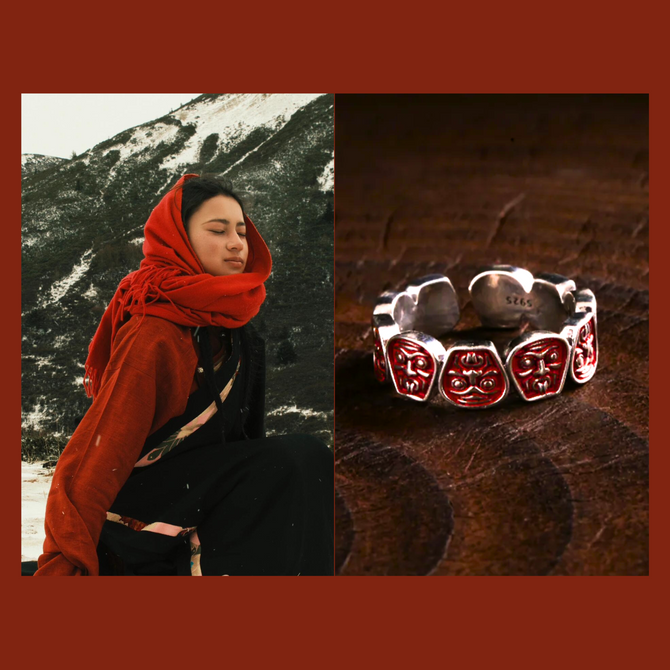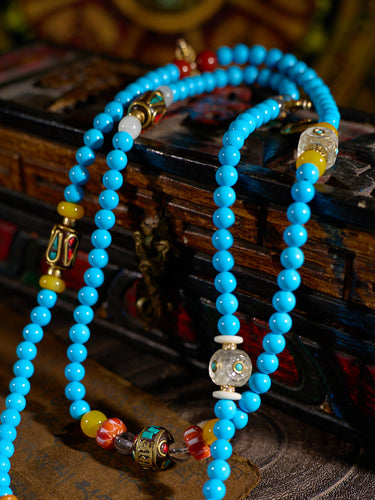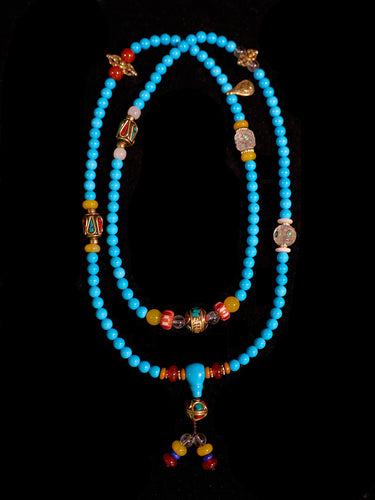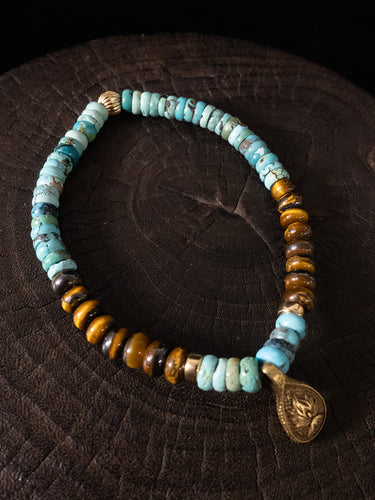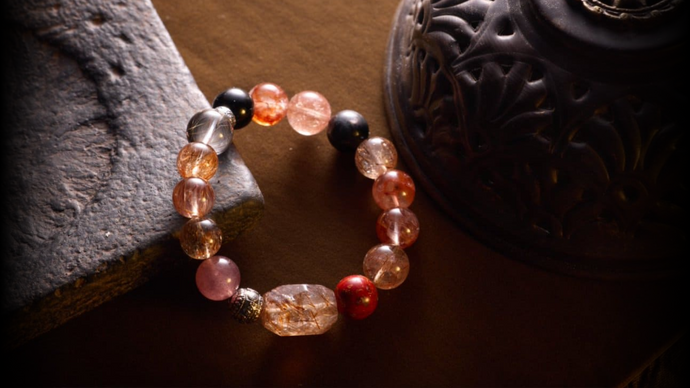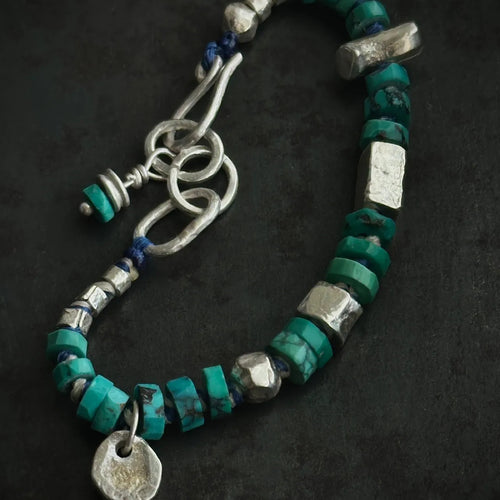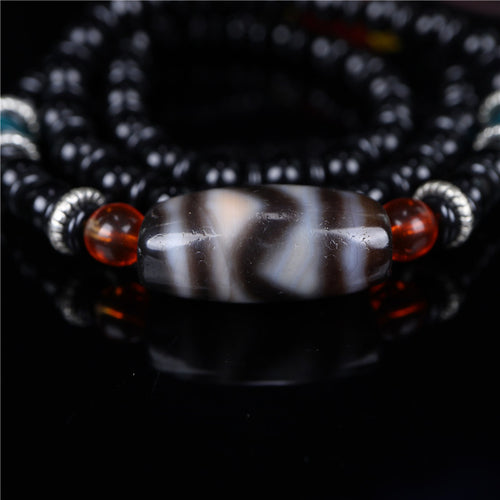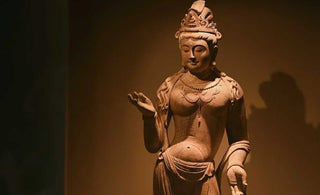
In the heart of ancient China's Tang Dynasty, a realm steeped in cultural brilliance and spiritual profundity, artisans crafted Wooden Buddha Statues that have withstood the test of time. Join us on a captivating journey as we delve into the sacred allure of these timeless masterpieces, echoing the ethos of Oriental Aesthetics.
A Glimpse into the Tang Dynasty
The Tang Dynasty, a golden age spanning from the 7th to the 10th centuries, marked an era of unparalleled cultural and artistic flourishing. It was during this epoch that Wooden Buddha Statues emerged as sublime embodiments of devotion and craftsmanship, capturing the spiritual essence of the time. The Tang Dynasty, characterized by its cosmopolitanism and openness to diverse cultural influences, provided a fertile ground for the convergence of artistic brilliance from across Asia.
The Essence of Wooden Mastery
Crafted from esteemed woods such as sandalwood or camphor, Tang Dynasty Wooden Buddha Statues were born from the hands of skilled artisans who approached their craft with a deep sense of reverence. The choice of wood went beyond aesthetics; it laid the foundation for both durability and texture, ensuring the statues conveyed a divine grace that resonated through the ages. The artisans' selection of materials was a thoughtful process, as they sought to create not just statues but vessels of spiritual significance.
Woodworking during the Tang Dynasty was a revered skill, and artisans honed their craft with precision. The meticulous artistry behind each Wooden Buddha Statue was a testament to the dedication and skill of these craftsmen. From the initial carving of the rough outline to the final detailing, each step demanded not only technical expertise but a profound connection to the spiritual symbolism infused within the artwork.
The artistry behind Tang Dynasty Wooden Buddha Statues was a meticulous process that demanded both technical expertise and spiritual insight. The artisans embarked on a journey of creation, starting with the careful selection of wood and culminating in the exquisite detailing that brought the statues to life. As the chisel met wood, the artists chipped away at the excess, revealing the hidden form within. It was a dance between the tangible and the intangible, as the artists sought to breathe life into the material while remaining attuned to the spiritual resonance embedded in each carve.
The intricate detailing of the statues was not merely decorative but held deep symbolic significance. The serene facial expressions, elegant mudras (hand gestures), and meticulously carved ornaments all contributed to the spiritual narrative woven into the wood. Every nuance invited contemplation, creating a sacred dialogue between the viewer and the divine. In the silent eloquence of the statues, one could discern a language that transcended words — a language of spiritual connection and transcendence.
Symbolism Woven in Wood
Tang Dynasty Wooden Buddha Statues were not static sculptures; they were vessels of profound symbolism. The artisans imbued each statue with layers of meaning, creating a visual language that spoke to the core of spiritual beliefs. The serene facial expressions of the Buddha conveyed a sense of inner peace and enlightenment, inviting the observer to contemplate the path to spiritual awakening. The elegant mudras, or hand gestures, held specific meanings, symbolizing teachings, blessings, or protection. Even the intricately carved ornaments and robes were laden with symbolism, representing the divine attributes associated with the Buddha.
The symbolism woven into the wood served as a guide for spiritual contemplation. Viewers were not merely passive observers but active participants in a sacred dialogue, engaging with the profound messages conveyed through the artistic medium. The Wooden Buddha Statues became not only objects of aesthetic admiration but portals to spiritual exploration, fostering a deeper connection between the earthly realm and the divine.
The Journey of Spiritual Devotion
The creation of Tang Dynasty Wooden Buddha Statues was more than an artistic endeavor; it was a journey of spiritual devotion. The artisans, in each stroke of their chisels, sought not only to capture the physical form of the Buddha but to embody the essence of transcendence. The act of carving became a meditative practice, a communion between the artist and the divine.
As the artists meticulously shaped the wood, they engaged in a process of spiritual alchemy, transforming raw materials into vessels of reverence. The journey of crafting a Wooden Buddha Statue was a pilgrimage of the soul, where the artist's devotion and skill merged to create an object that transcended the material realm. Each statue became a conduit for spiritual reflection, inviting those who beheld it to embark on their own journey of inner exploration.
A Timeless Legacy
The legacy of Tang Dynasty Wooden Buddha Statues endures beyond the passage of centuries. These masterpieces, born from a convergence of artistic genius and spiritual insight, transcend cultural boundaries, inspiring awe and reverence across diverse audiences. The durability of the materials and the timeless symbolism woven into the wood contribute to the enduring legacy of these artworks.
As we marvel at these Wooden Buddha Statues today, we are not merely witnessing artifacts of a bygone era; we are connecting with a living legacy that continues to resonate with spiritual seekers and art enthusiasts alike. The statues serve as bridges across time, inviting us to contemplate the shared human quest for meaning and transcendence. The preservation of this legacy becomes not only a responsibility but a privilege—a testament to the enduring power of art to transcend temporal confines.
In the spirit of preserving and appreciating classical oriental art, Oriental Aesthetics stands as a beacon for artists, collectors, and enthusiasts. Recognizing the intrinsic value of Tang Dynasty Wooden Buddha Statues, we strive to provide systematic, high-quality professional services that foster a deeper understanding of their significance. Our mission extends beyond the transactional; we are committed to nurturing a cultural appreciation that transcends borders and generations. Journey with us as we embrace the sacred world of Tang Dynasty Wooden Buddha Statues. We invite you to engage not only with the physical artifacts but with the stories they tell, the spiritual messages they convey, and the cultural legacy they represent.
In conclusion, the Wooden Buddha Statues of the Tang Dynasty beckon us to embark on a sacred journey—one that transcends time and cultural confines. Through the lens of Oriental Aesthetics, we not only witness the craftsmanship of yesteryears but actively contribute to the preservation and celebration of a rich cultural heritage. Join us in this odyssey into the sacred, where art, spirituality, and history converge in harmonious splendor.
Wooden Treasures: The Artistic Marvels of Tang Dynasty Buddha Statues
Among the numerous captivating art forms that emerged from ancient China, the Tang Dynasty Buddha statues hold a special place of reverence and artistic marvel. These wooden treasures from the Tang Dynasty (618-907 AD) represent an extraordinary fusion of spiritual devotion, exquisite craftsmanship, and cultural significance. In this article, we delve into the captivating world of Tang Dynasty Buddha statues, exploring their historical context, artistic features, and enduring legacy.
The Tang Dynasty: A Golden Age of Artistic Flourishing
The Tang Dynasty, often referred to as a golden age of artistic flourishing, stands as one of the most remarkable periods in Chinese history. Lasting from 618 to 907 AD, this era witnessed a vibrant cultural and artistic renaissance that left an indelible mark on the nation's history. Under the reign of the Tang emperors, a supportive environment for creativity and innovation was fostered, resulting in an unprecedented surge in artistic expression and cultural exchange.
The Tang Dynasty was characterized by political stability, economic prosperity, and territorial expansion. These favorable conditions provided a fertile ground for artistic development, attracting talented artisans, poets, musicians, and scholars from across the empire and beyond. The imperial court actively patronized the arts, investing in grand architectural projects, supporting artistic workshops, and organizing lavish cultural events. This patronage not only elevated the status of artists but also contributed to the flourishing of artistic endeavors.
One of the most remarkable aspects of Tang Dynasty art was its cosmopolitan nature. The dynasty's capital, Chang'an (present-day Xi'an), stood as a bustling metropolis at the heart of the Silk Road, connecting China with the outside world. This strategic position facilitated the exchange of ideas, goods, and artistic influences from diverse cultures, including Central Asia, Persia, India, and the Korean Peninsula. This cross-cultural pollination enriched artistic practices, fostering a spirit of innovation and diversity.
Visual arts, in particular, thrived during the Tang Dynasty. A wide range of artistic forms, such as painting, sculpture, ceramics, and lacquerware, reached new heights of technical skill and aesthetic refinement. The period witnessed the emergence of new painting styles, including the monumental and narrative style known as "court painting," which depicted historical events, court ceremonies, and mythical tales. Artists explored various techniques, such as detailed brushwork, realistic rendering, and innovative use of colors, resulting in captivating and visually stunning artworks.
Sculpture, another prominent artistic medium of the Tang Dynasty, experienced a golden age as well. The period witnessed the creation of monumental Buddha statues, guardian figures, and other religious sculptures that adorned temples, caves, and imperial tombs. These sculptures showcased exceptional craftsmanship, with artisans skillfully capturing the physical and spiritual essence of their subjects. The Tang Dynasty Buddha statues, with their serene expressions, graceful postures, and intricate details, exemplified the deep spiritual devotion and artistic mastery of the era.
The Dynasty’s Buddha Statues
Tang Dynasty Buddha statues were not merely artistic creations; they embodied deep spiritual symbolism and devotion. These statues were created as objects of veneration, serving as focal points for religious practices and meditation. Each statue represented a specific Buddha or bodhisattva, embodying their qualities and teachings. The statues were crafted with meticulous attention to detail, with the intention of evoking a sense of reverence and spiritual connection.
Wood became the primary medium for creating Tang Dynasty Buddha statues due to its versatility, accessibility, and symbolic significance. Skilled artisans employed a variety of woodworking techniques to transform blocks of wood into awe-inspiring sculptures. The statues were often carved from precious woods such as sandalwood or camphor, adding a touch of natural beauty and fragrance to the artwork.
Tang Dynasty Buddha statues are renowned for their lifelike representation and the ability to capture the essence of enlightenment. The artisans skillfully portrayed serene facial expressions, gentle postures, and intricate hand gestures known as mudras. Through these artistic choices, they sought to convey the inner qualities and enlightened state of the Buddhas and bodhisattvas, inspiring devotion and spiritual contemplation in the viewer.
Tang Dynasty Buddha statues were adorned with a variety of symbolic attributes and ornaments, each carrying its own significance. The statues often featured distinctive hairstyles, elaborate crowns, and ornate robes, all of which held symbolic meaning rooted in Buddhist iconography. For example, the ushnisha, a protuberance on the crown, symbolized supreme wisdom, while the mudras represented specific teachings or states of enlightenment.
Tang Dynasty Buddha statues exhibit regional variations and influences, reflecting the diverse artistic traditions across different parts of China. The statues created in the central region, particularly in the capital city of Chang'an (present-day Xi'an), often showcased a more classical and refined style. On the other hand, statues from the southwestern region, influenced by the ethnic cultures of the area, displayed distinctive features and regional aesthetics. These regional styles added richness and diversity to the world of Tang Dynasty Buddha statues.
Cultural and Historical Significance
The cultural and historical significance of Tang Dynasty Buddha statues extends far beyond their artistic beauty. These wooden treasures hold immense value as tangible artifacts that offer insights into the religious, cultural, and social dynamics of the time. They serve as a window into the past, allowing us to understand and appreciate the rich tapestry of the Tang Dynasty's heritage.
From a religious standpoint, Tang Dynasty Buddha statues reflect the profound influence of Buddhism on Chinese society during the era. Buddhism had gained widespread popularity and patronage among the ruling elites and the general population alike. The statues were created as objects of veneration and devotion, serving as focal points for religious rituals, meditation, and teachings. They embodied the ideals and teachings of the Buddhas and bodhisattvas, representing a visual manifestation of enlightenment and spiritual guidance.
The artistic elements and symbolism present in Tang Dynasty Buddha statues also provide valuable insights into the cultural beliefs and iconography of the time. The statues were adorned with various attributes, such as crowns, robes, and hand gestures known as mudras, each carrying its own symbolic meaning rooted in Buddhist traditions. These iconographic details reflect the deep understanding and interpretation of Buddhist teachings and their integration into Chinese culture.
Furthermore, Tang Dynasty Buddha statues offer a glimpse into the social and historical context of the era. They were not standalone artworks but were often found within temple complexes, caves, and imperial tombs. Their presence in these settings signifies their role in religious practices, as well as their association with the imperial court and its patronage of Buddhism. As historical artifacts, Tang Dynasty Buddha statues bear witness to the artistic achievements and technical prowess of ancient Chinese artisans. The level of craftsmanship and attention to detail displayed in these sculptures is a testament to the skills honed by generations of craftsmen. By studying these statues, art historians and researchers can gain valuable insights into the techniques, materials, and tools used during the Tang Dynasty, contributing to a deeper understanding of ancient Chinese artistry.
In conclusion, Tang Dynasty Buddha statues carry immense cultural and historical significance. They embody the fusion of spiritual devotion, artistic excellence, and historical context, providing a tangible link to the rich heritage of the Tang Dynasty. Through their religious symbolism, artistic craftsmanship, and association with the era's cultural and social dynamics, these wooden treasures continue to captivate and inspire art enthusiasts, scholars, and individuals interested in the cultural legacy of ancient China.
Conclusion
The Tang Dynasty Buddha statues stand as shining examples of artistic excellence, spiritual devotion, and historical significance. These wooden treasures continue to captivate art enthusiasts and collectors alike with their lifelike representations, intricate details, and profound symbolism. At Oriental Aesthetics, we celebrate the legacy of these remarkable artworks, and we are committed to fostering a deeper understanding and appreciation of Tang Dynasty Buddha statues and classical oriental art as a whole.


